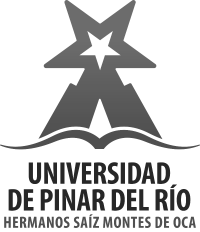Notes for the improvement of sports management in Cuba: the case of baseball
Main Article Content
Abstract
Downloads
Article Details
References
Balibrea, E., Santos, A., & Lerma, I. (2002). Actividad física, deporte e inserción social: Un estudio exploratorio sobre los jóvenes en barrios desfavorecidos. Apuntes, Educación Física y Deportes, 69, 106-111. Recuperado de https://core.ac.uk/reader/39140720
Chelladurai, P. (s. f.). Gestâo do Desporto. Ludens, 15(4).
Gallifa Irujo, A., & Pin Arboledas, J. R. (2014). Actividad física y deporte: Un nuevo enfoque del bienestar. La necesidad de una estrategia ambiciosa para una sociedad activa y saludable. Navarra: IESE Business School. Recuperado de https://docplayer.es/6237061-Actividad-fisica-y-deporte -un-nuevo-enfoque-del-bienestar-la-necesidad-de-una-estrategia-ambiciosa-para-una-sociedad -activa-y-saludable.html
Granados, S. H. B., & Cuéllar, Á. M. U. (2018). Influencia del deporte y la actividad física en el estado de salud físico y mental: Una revisión bibliográfica. Katharsis: Revista de Ciencias Sociales, (25), 141-160. Recuperado de https://dialnet.unirioja.es/servlet/articulo?codigo=6369972
Kemoun, G., Thibaud, M., Roumagne, N., Carette, P., Albinet, C., Toussaint, L., … Dugué, B. (2010). Effects of a physical training programme on cognitive function and walking efficiency in elderly persons with dementia. Dementia and Geriatric Cognitive Disorders, 29(2), 109-114. Recuperado de https://doi.org/10.1159/000272435
MINREX. (2019). Informe sobre las afectaciones del Bloqueo a Cuba del año 2019. La Habana, Cuba: Ministerio de Relaciones Exteriores.
Moreno, J. H. (1994). Fundamentos del deporte. Análisis de Las Estructuras Del Juego Deportivo. INDE. Recuperado de https://www.inde.com/es/productos/detail/pro_id/7
ONAT. (2017). Informe mensual sobre TCP. La Habana, Cuba: ONAT.
ONEI. (2019). Series Estadísticas Deporte y Cultura Física 1985-2018. La Habana, Cuba: Oficina Nacional de Estadística e Información.
Pedersen, L., Idorn, M., Olofsson, G. H., Lauenborg, B., Nookaew, I., & Hvass Hansen. (2016). Voluntary Running Suppresses Tumor Growth through Epinephrine- and IL-6-Dependent NK Cell Mobilization and Redistribution. Cell Metabolism, 23(3), 554-562. Recuperado de https://doi.org/10.1016/j.cmet.2016.01.011
Pereira, E. B. (2003). Nuevas tendencias en la gestión deportiva. Revista jurídica de deporte y entretenimiento: deportes, juegos de azar, entretenimiento y música, (10), 355-362. Recuperado de https://dialnet.unirioja.es/servlet/articulo?codigo=909029
Ramírez, W., Vinaccia, S., & Suárez, G. R. (2004). El impacto de la actividad física y el deporte sobre la salud, la cognición, la socialización y el rendimiento académico: Una revisión teórica. Revista de Estudios Sociales, (18), 67-75. Recuperado de https://www.redalyc.org/articulo.oa?id=81501807
Royo, I. A., Laín, S. A., Garzón, M. J. C., García, C. D., Agüero, A. G. de, Gallego, J. G., … Mallén, J. A. C. (2016). Actividad física, ejercicio y deporte en la lucha contra la obesidad infantil y juvenil. Nutrición hospitalaria: Organo oficial de la Sociedad española de nutrición parenteral y enteral, 33(Extra 9), 1-21. Recuperado de https://dialnet.unirioja.es/servlet/articulo?codigo=6097048
Sancho, J. A. M. (2013). Componentes de la Gestión Deportiva. Una aproximación. VIREF Revista de Educación Física, 2(2), 1-19. Recuperado de https://revistas.udea.edu.co/index.php/viref/article/view/15775
Sanmartín, M. G. (2004). El valor del deporte en la educación integral del ser humano. Revista de educación, (335), 105-126. Recuperado de https://dialnet.unirioja.es/servlet/articulo?codigo=1066536
Scarmeas, N., Luchsinger, J. A., Schupf, N., Brickman, A. M., Cosentino, S., Tang, M. X., & Stern, Y. (2009). Physical activity, diet, and risk of Alzheimer disease. JAMA, 302(6), 627-637. https://doi.org/10.1001/jama.2009.1144


